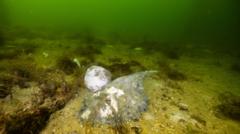An ecological crisis is unfolding in South Australia where a toxic algal bloom has turned the ordinarily clear waters into a disturbing green haze, resulting in the death of over 400 marine species. This rapid proliferation of algae, which has grown significantly since March, has led South Australia's Premier, Peter Malinauskas, to classify it as a "natural disaster." Despite his declaration, the federal government has hesitated to label the event a natural disaster under existing legal definitions, which typically pertain to cyclones and floods.
To address the impact of this environmental catastrophe, the federal government has rolled out a financial aid package of A$14 million (approximately $9 million), which Premier Malinauskas has pledged to match, directing funds towards research, cleanup efforts, and support for affected industries. Critics, including South Australian Greens Senator Sarah Hanson-Young, have voiced concerns that the federal response would be swifter if the crisis were impacting more prominent coastal areas like Bondi Beach in Sydney.
The algal bloom, exacerbated by climate change factors such as ocean warming and nutrient pollution, has devastated local ecosystems, resulting in substantial economic ramifications for industries reliant on marine resources. As the bloom continues to stretch across the coastline, from Coorong to the Yorke Peninsula, the fishing community reports severe financial losses, leaving many fishermen struggling to make ends meet. "I've got fishermen in tears on the phone," stated Ian Mitchell, highlighting the emotional toll this ecological disaster is taking on the community.




















